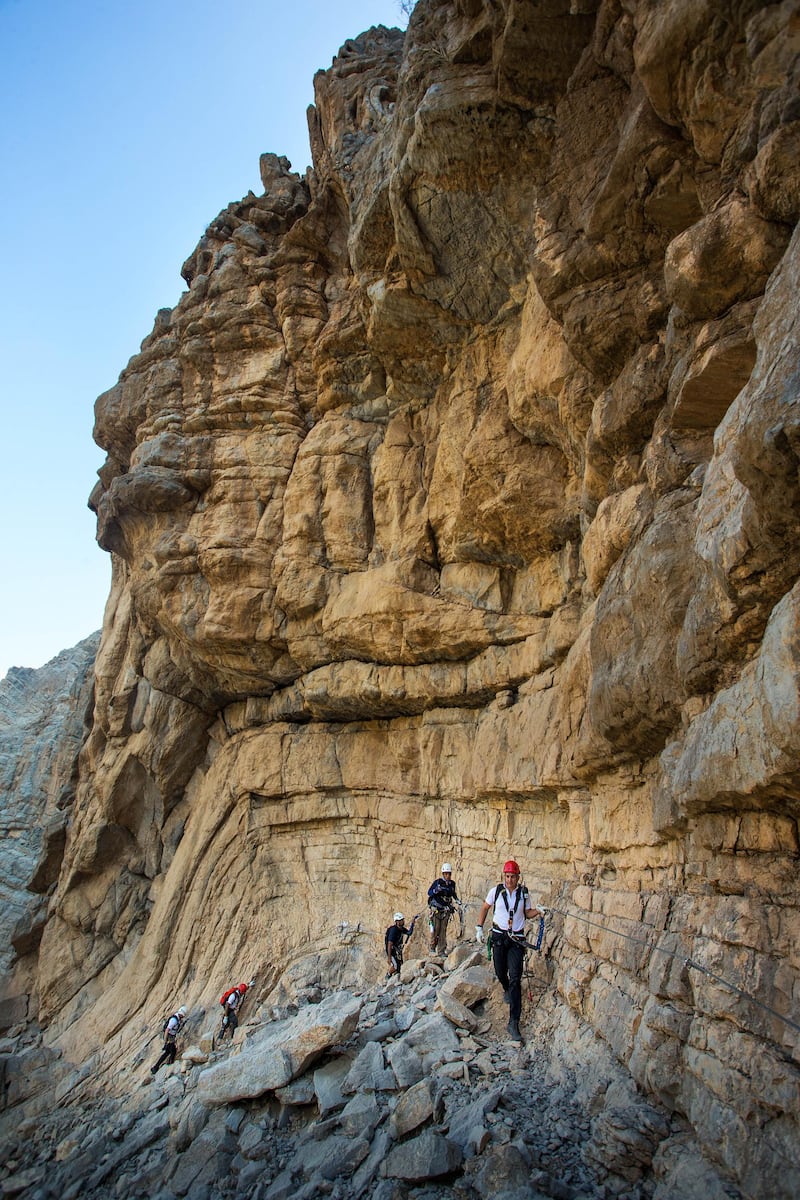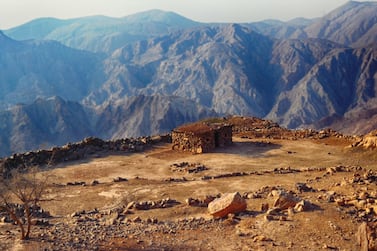Although there is much ground to cover in the region, there are many risks involved when hiking unprepared or without a guide – people have had to be air rescued from the rugged terrain of the Hajar Mountains and have even lost their lives. The Ras Al Khaimah Tourism Development Authority is trying to regulate the areas which feature the most challenging hikes, including Stairway to Heaven, and ensure that people go out with experts. The authority is also trying to protect the area from litter.
"This area has great mountains but they can't be taken lightly," Paige Duvenage from Adventurati Outdoors, a hiking company that works with RAKTDA, says. "You can get lost easily and there are no fresh running water sources. Stairway to Heaven in the biggest problem as it's advertised all over, but people don't realise it is potentially very dangerous. There are many cases of people on all routes lacking preparation, so regulation is a must, but enforcement is the challenge."
Emirates Canyoneering Club’s lead guide, Christopher Craver, says there are some essential safety tips before you go for a hike, whatever your experience.
Know your limits: What is your fitness capability? Have you had experience hiking and camping outside? Do you have any medical conditions that could put you or your group at risk? Answering these questions will help you to know if you can set off on your own or if you should go with a local guide or group.
When to go: The best months to go are between November and April, before the temperature gets too hot. High temperatures, risk of exposure and exhaustion, combined with poor preparation, can lead to fatal consequences.
Plan your route carefully: Don't rely on a phone signal; download your maps before you leave to follow your GPS location, and make sure to tell someone about your route and time frame, so they can organise help in case a problem arises while you are on the trail and have not checked in with them.
Fuel up: Make sure to eat a hearty meal and hydrate well before the hike. For a hike that lasts between three to five hours, 2 to 3 litres of water is recommended, with at least another litre or two for anything longer. You can purchase a Camel Pack to hold your water or, if you bring the large plastic bottles, freeze one overnight to have access to cold water during your trip. Salted snacks, nuts, fruits and a full lunch are all important for a three to five hour hike – any longer and you will need to make sure to prepare in case your eight-hour hike turns into a full day. Sandwich material, jerky, peanut butter, canned goods or anything that can make several meals and doesn't take too much space in your pack are good.
Dress appropriately: Loose clothes, hats and sunglasses are a must. For mountainous terrain, sneakers with thick soles and good grip are preferred over mountain boots, especially in areas that are rocky, where you will need the ability to pull your feet out quickly if your foot slips between rocks. If there is water, hiking water sandals or shoes that can get wet are also a must.
Weather watch: Check the weather before the trip, as rain can bring flash floods in narrow canyon areas. Bring a pullover or coat in case the weather shifts or you are out past daylight.
Useful safety kit: Headlamps are important in case your day hike goes longer than expected. Sunscreen and a first-aid kit are also vital. A portable charger, wilderness camping blanket and a pocketknife can be very useful in case of emergency situations.






